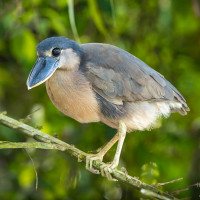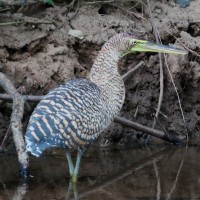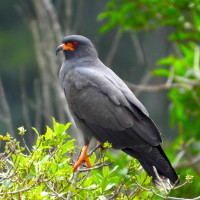Opis
Crooked Tree Wildlife Sanctuary is recognized as a Wetland of International Importance under the Ramsar Convention. The sanctuary contains 6,600 hectares of lagoons, creeks, log wood swamps, broad leaf forest and pine savanna, home to hundreds of species of wildlife. The Jabiru stork is Crooked Tree's most famous resident. Belize has the largest nesting population of these birds in all of Central America. Jabiru storks arrive in November to nest in the lowland pine savannas.
The birding in Crooked Tree Wildlife Sanctuary is phenomonal. Especially when you take a lagoon tour (e.g. from Birds Eye View Lodge). Various species of heron, kingfisher, storks, spoonbill, flycatcher, kite, hawk, rail, ibis and many more.
Szczegóły
Dostęp
Crooked Tree Wildlife Sanctuary is located 50 km northwest of Belize City, near the village of Crooked Tree, 5 km off the Phillip Goldson Highway. Bus services are available (Monday to Saturday) from Belize City to Crooked Tree Village, but the easiest way to get there is by car. To explore the Crooked Tree Wildlife Sanctuary you'd best take a tour by boat.
Teren i siedlisko
Tereny podmokłe , RzekaWarunki
Płaski , BagiennyTrasa dookoła
TakCzy luneta będzie przydatna ?
NieUdany sezon obserwacyjny
Przez cały rokNajlepszy czas na wizytę
Wiosenne migracje , Jesienne migracjeTrasa
Droga nieutwardzonaPoziom trudności szlaku pieszego
Średnio wymagający spacerDostępne
ŁódźCzatownia/platforma obserwacyjna
NieDodatkowe informacje
Boat Tours are organized by Birds Eye View Lodge (see link below). You can also stay there but I'd stayed at a nearby B&B called Beck's Bed & Breakfast which I can recommend.


